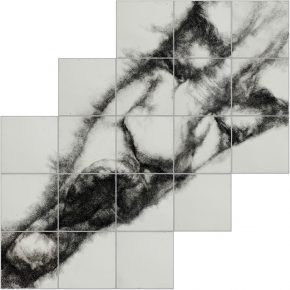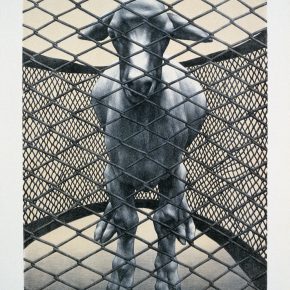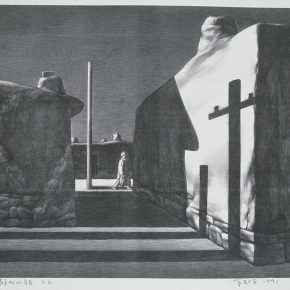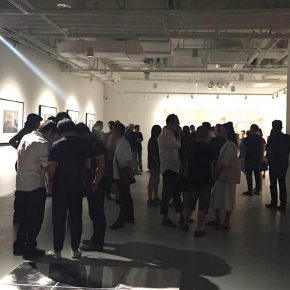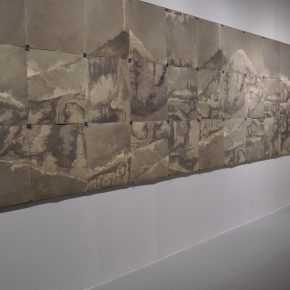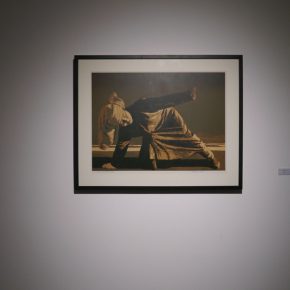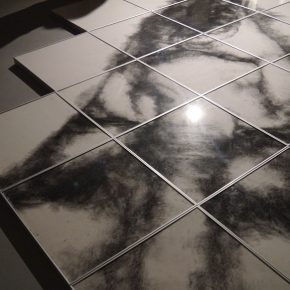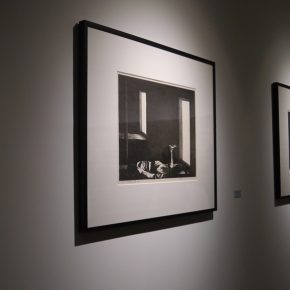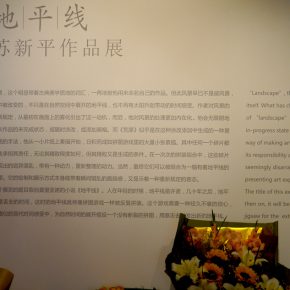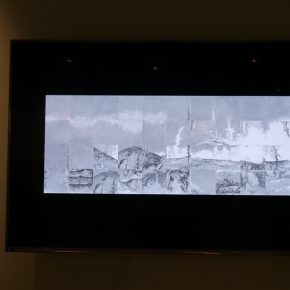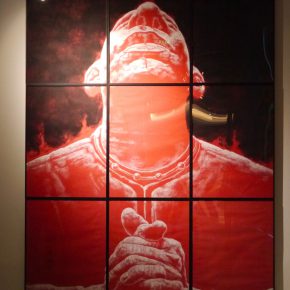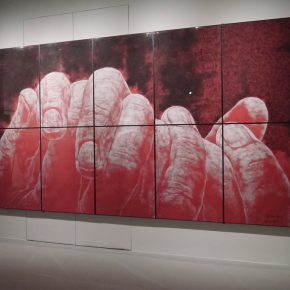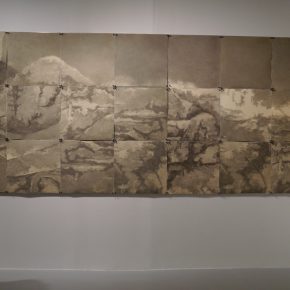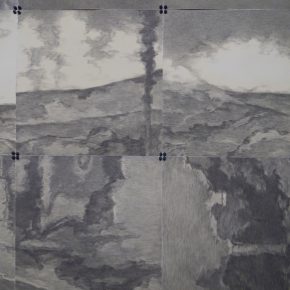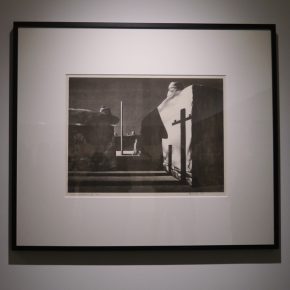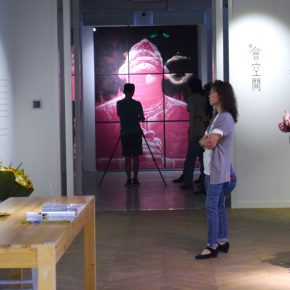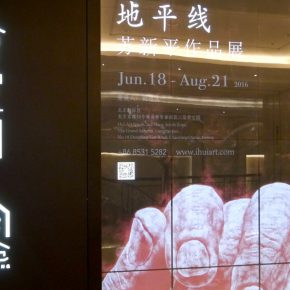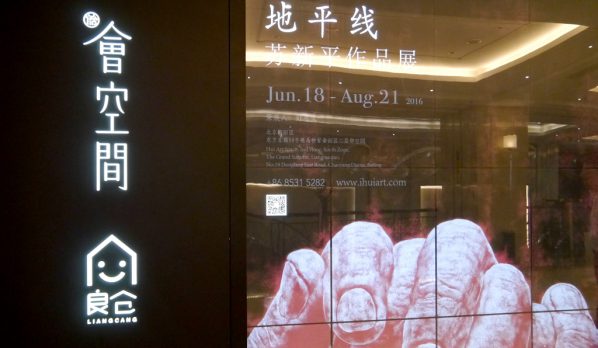
During childhood, the horizon is a promise; after decades, the horizon represents lost time, and from then on, it will be reconstructed time and again like a jigsaw puzzle. Playing the game asks for an enduring confidence, which will enable us to presume a non-splitting jigsaw for the extension of time and to create new horizons regardless of the confused perception of time in the modern world.
– The title of this exhibition comes from Patrick Modiano’s L'Horizon
At 4:00 pm on June 18, 2016, “Horizon – the Exhibition of Su Xinping’s Works” opened at Hui Art Space. The exhibition is planned by Shu Kewen, connecting the two parallel spaces by artist Su Xinping to form a “horizon”. One is a small lithograph, created more than two decades ago, another one is comprised of many different fragments of landscapes or portraits. The “Horizon” that was once frozen on the lithograph seems to never fade away from Su Xinping’s mental imagery.
“Landscape”, the word with apparent classical aesthetics was used repeatedly by Su Xinping to name his works. But the “landscape” here no longer has the same meanig. What has changed inside is not only the horizon that extends into natural space, and the feeling of time aroused by sunrise has also gone. The artist’s redefining of “landscape” was originally motivated by the “atomization” on canvas, after which his process of “landscape” was further internalized. He would prolong the in-progress state of an artwork indefinitely, altering or adding it at any time. The “Wasteland” appears to be a more complete technique out of this “altering and adding” way of creating art. The artist started with sketching on a piece of paper, and accumulated them day by day like a jigsaw puzzle. None of these little sketches can assume its responsibility as an integral artwork, however delicate they are. Yet it is the delicacy that makes them possible. By assembling these fragments over and over again, the seemingly disarray generates an impetus for rearrangement. By all means, they finally congregate as a wasteland with the horizon. This method of making and presenting art expresses a sense of vulnerability – it will disintegrate in a moment and reveal a firm will of redefinition at the same time.
President of CAFA Fan Di’an addressed the opening ceremony and said that, “Now, the information field of cultural intersection has brought the artists’ creation stimulation, driving artists to create. At the same time, it also requires the artists to have a pure working method. Seen from Su Xinping’s recent new work, he has returned to the language itself more and more, he returned to the creative style of natural blending of ‘hand and heart’”.
“Horizon”: Inner ConcernEven the portraits, no matter if they are of a hand or head, they are processed in the same way. The implication is that the portraits are “landscaped”, as the abstraction of portraits in modern art, not only a refusal of classical aesthetics with the painting language, but also a reshaping of inner awareness. Through landscaping the portraits, Su Xinping seems to reassemble the fragmented human figures with the divine space-time in his lithographs.
As curator Shu Kewen writes that: “Knowledge, experiences, words, actions and aspirations mutually overlap, become enriched, but it does not mean that we will be more powerful and righteous, because they will fight with each other and the desire often fades away. In Su Xinping’s practice, it seems this confrontation works on him, otherwise he would not have always maintained some hesitation and uncertainty with his works, which is not only reflected in the hesitant words and behavior, the cautious manner of dealing with people, but also reflected in the uncertain and mysterious atmosphere created in his works, frankly and sincerely expressing his difficulties and hesitation.”
Su Xinping mentioned several times the return to the “innermost being”. The word may require a bit of explanation, but he does explain it somehow in his work. In the lithograph themed on the grassland in Inner Mongolia, there is a distinct horizon in his sense of space, and time flows in between the sunrise and nightfall. Nevertheless, the contemporary aspect sees everything changing rapidly, like the lithographs – the limestone plates have worn away and only the prints are left, thus the traces on plates can merely be kept in his “innermost being”, as the objects of inner awareness. While even such internalized objects are doomed to wear, to deform, and eventually to fall apart. They need the plot to become a new event, and then there is the possibility to escape from all sorts of finales in the political sense and in the foreground is the real life.
The exhibition will last until August 21.
About the ArtistSu Xinping was born in Jining city, Inner Mongolia in 1960, and served in the army in 1977, graduated from the Painting Department of Tianjin Academy of Fine Arts in 1983, and taught in the Department of Fine Arts, Inner Mongolia Normal University after graduation. He graduated from the Department of Printmaking, Central Academy of Fine Arts (CAFA), with a master’s degree in 1989, and remained in the school staff after graduation. Currently he is a Vice President, Professor, and Doctoral Tutor of CAFA. The major solo exhibitions: 2016 Horizon – The Exhibition of Su Xinping’s works, Hui Art Space, Beijing, China; 2015 The Solemn Landscape: Su Xinping Solo Exhibition, Guangdong Museum of Art & FM Art Space, Guangzhou, China; 2014 Su Xinping: From Surrealism to Automaticism, Museum of Luxun Academy of Fine Arts, Shenyang, China; 2009 Beijing Landscape, US Asian Cultural Academy, Washington DC, USA; 2005 Su Xinping Portrait Works, National Art Museum of China, Beijing, China. The major group exhibitions: 2015 CHINA 8 – Contemporary Art from China on the Rhine and Ruhr, NRW-Forum Düsseldorf, Germany; 2015 Tradition and Innovation: The Human Figure in Contemporary Chinese Art, Chazen Museum of Art, University of Wisconsin-Madison, Madison, U.S.A; 2014 Future Returns: Contemporary Art from China, Eli and Edythe Broad Art Museum at Michigan State University, East Lansing, U.S.A.
Works collected by: Art Gallery of New South Wales, Australia; The British Museum, U.K.; Asia Pacific Museum, U.S.A; Portland Art Museum, U.S.A; Fukuoka Art Museum, Japan; CAFA Art Museum, Beijing, China.
Text and Photo by Yu Ya, translated by Chen Peihua and edited by Sue/CAFA ART INFO


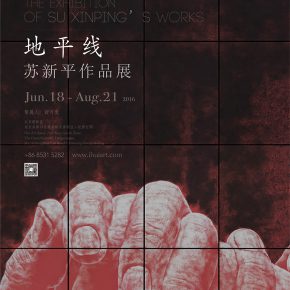
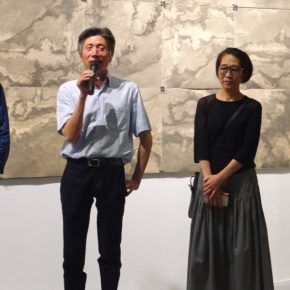
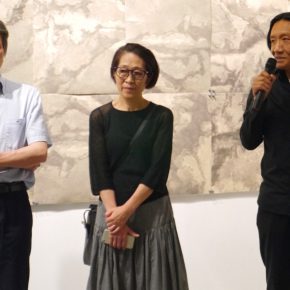

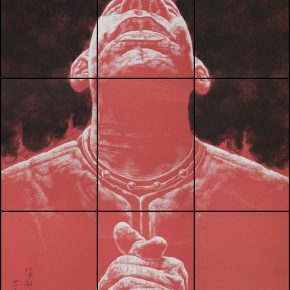
-290x290.jpg)

